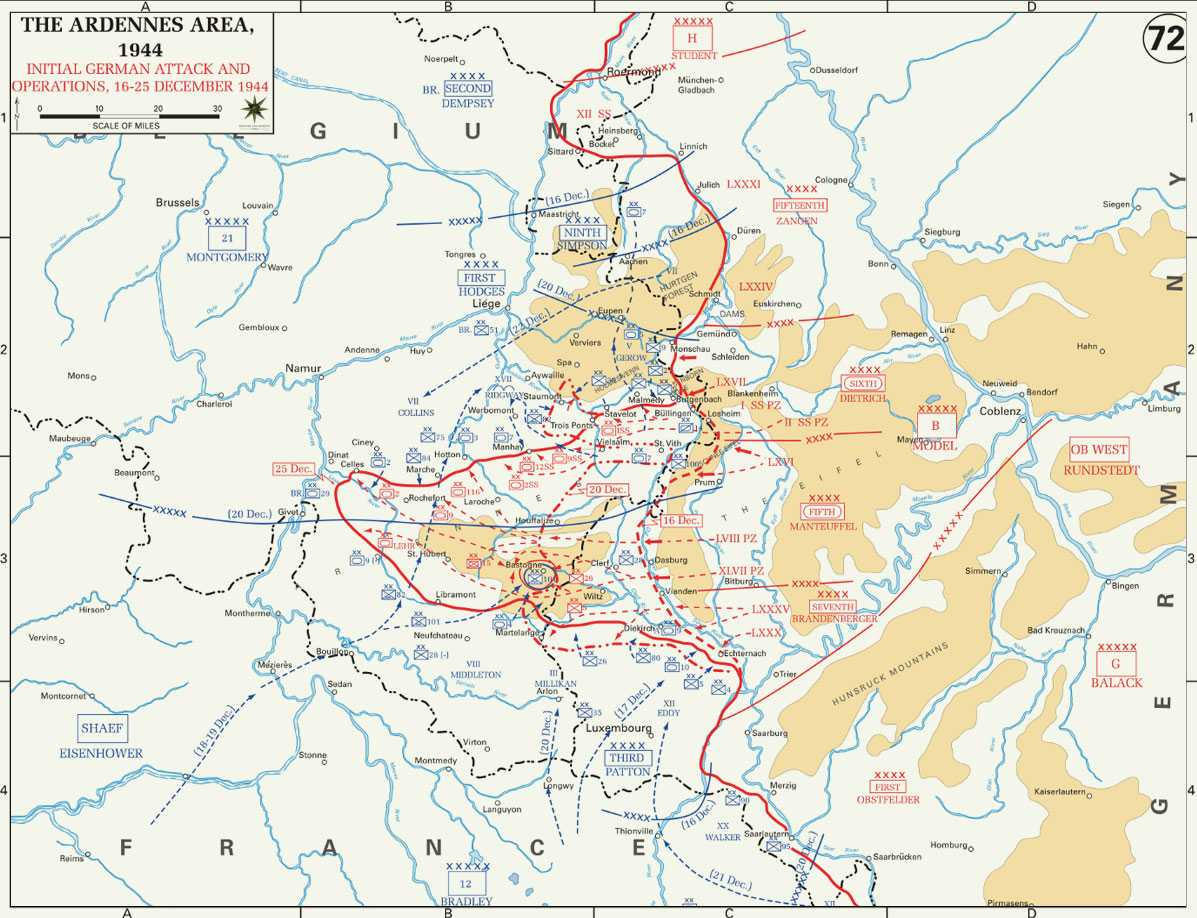Total Allied casualties
-
Killed: 19.200
-
Wounded: 48.200
-
Captured: 23.240
-
Total: 89.500
Total Axis casualties
-
Killed: ± 75.000
-
Wounded: not known
-
Total: ± 75.000
Please keep in mind that 100% accurate figures about the number of casualties cannot be given with complete certainty.
“The present situation is to be regarded as one of opportunity for us and not of disaster…"
History and facts about Battle of the Bulge
The Battle of the Bulge, also known as the Ardennes Offensive, was the last major German offensive campaign on the Western Front during World War II. The offensive was carried out from 16 December 1944 to 25 January 1945, towards the end of the war in Europe. It was launched through the densely forested Ardennes region between Belgium and Luxembourg.
The primary military objectives were to deny further use of the Belgian port of Antwerp to the Allies and to split the Allied lines, which potentially could have allowed the Germans to encircle and destroy the four Allied forces. Nazi dictator Adolf Hitler, who by this time had assumed direct command of the German armed forces, believed that achieving these objectives would compel the Western Allies to accept a peace treaty in the Axis powers' favor. By this time, it was palpable to virtually the entire German leadership including Hitler himself that they had no realistic hope of repelling the imminent Soviet invasion of Germany unless the Wehrmacht was able to concentrate the entirety of its remaining forces on the Eastern Front, which in turn obviously required that hostilities on the Western and Italian Fronts be terminated.
The Battle of the Bulge remains among the most important battles of the war, as it marked the last major offensive attempted by the Axis Powers on the Western front. After their defeat, Germany would retreat for the remainder of the war.


